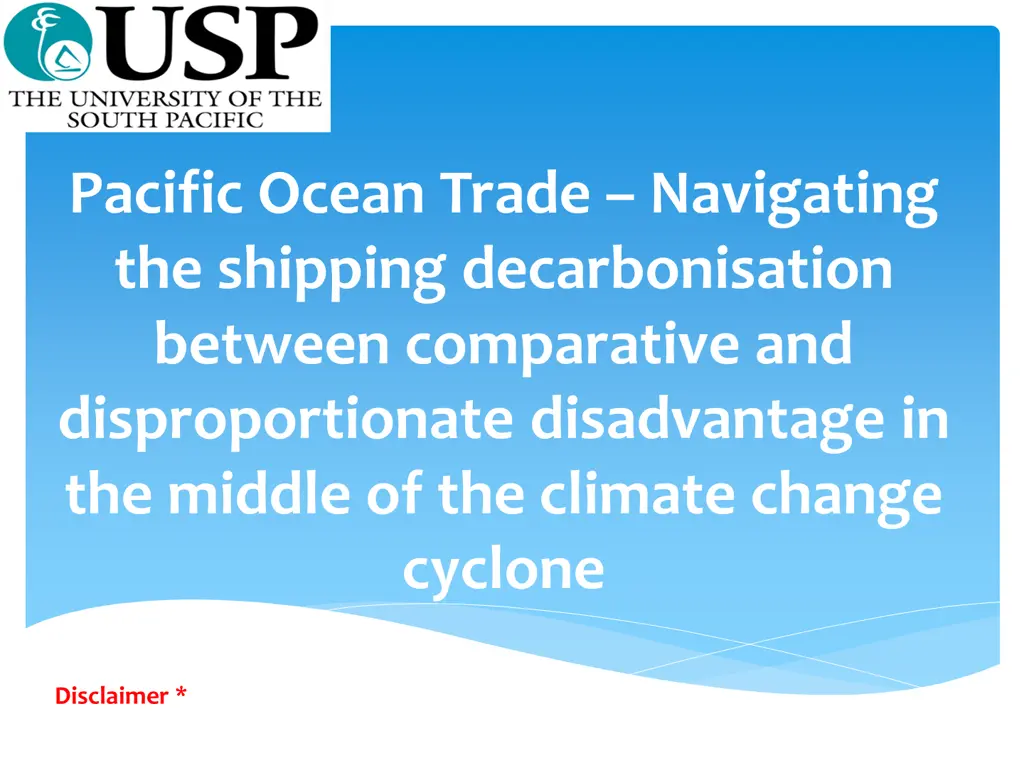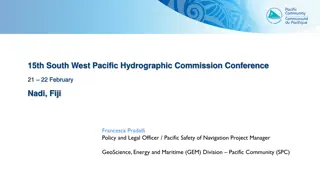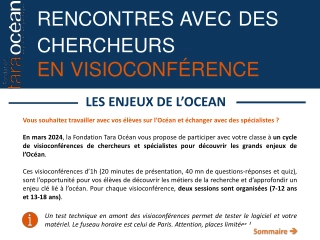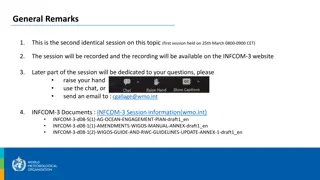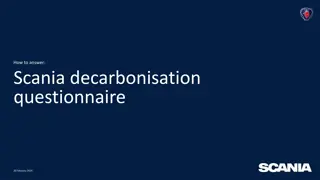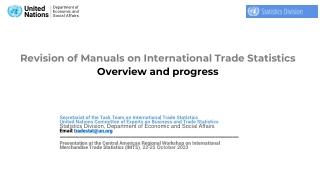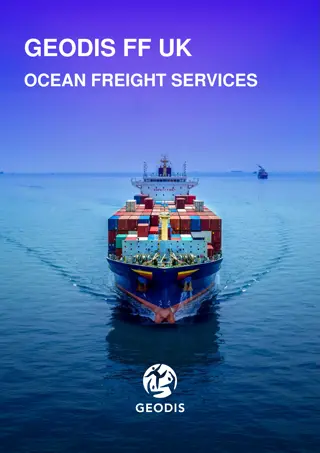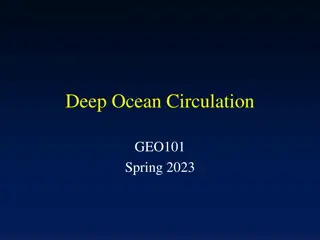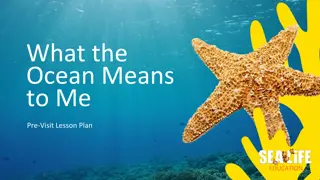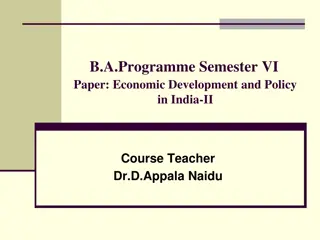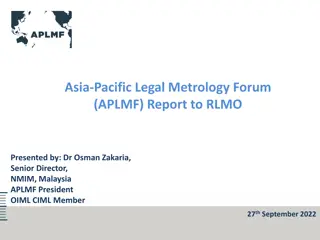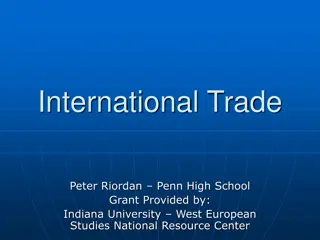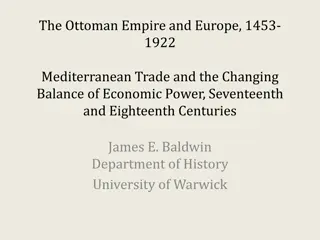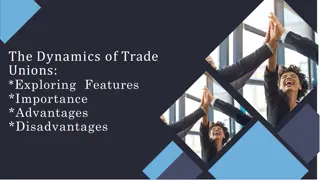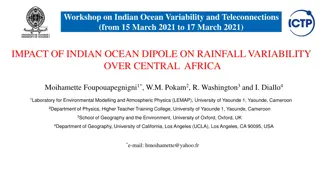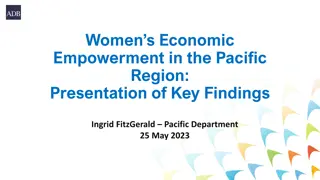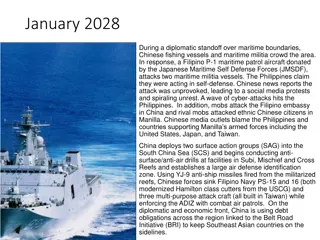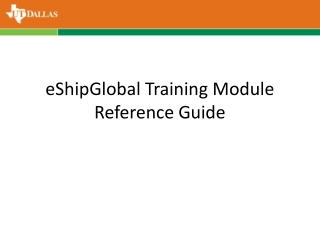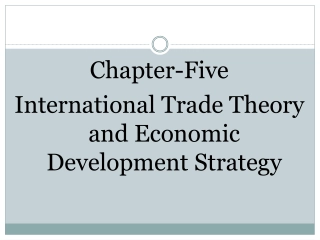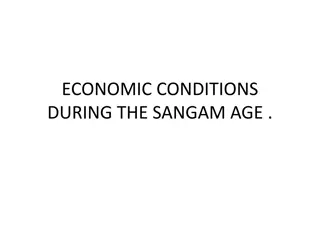Navigating Shipping Decarbonisation in the Pacific Ocean Trade
Explore the challenges and potential solutions for decarbonising the Pacific Ocean trade amidst concerns of disproportionate impact on developing states. Discover the proposed International shipping Green House Gas levy and its criticisms.
- Pacific Ocean Trade
- decarbonisation
- GHG emissions
- International shipping
- levy
- climate change
- developing states
- disproportionate impact
Download Presentation

Please find below an Image/Link to download the presentation.
The content on the website is provided AS IS for your information and personal use only. It may not be sold, licensed, or shared on other websites without obtaining consent from the author. Download presentation by click this link. If you encounter any issues during the download, it is possible that the publisher has removed the file from their server.
E N D
Presentation Transcript
Pacific Ocean Trade Navigating the shipping decarbonisation between comparative and disproportionate disadvantage in the middle of the climate change cyclone Disclaimer *
Do you know that: Around 80% of the world trade is dependent on international ocean carriage and ocean carriage contribute for around 3% of GHG emissions, which puts it in 6th position as emitters if it was a state Pacific States did not contribute to the GHG issue, but are heavily dependant on ocean transport and must everyone else cut emissions like
Presentation Coverage Pacific Ocean Trade 1. Introduction a) Issues not discussed here: The technical shipping issues, IMO procedural issues, IMO legal Issues (IEL) b) General backdrop of climate change, GHG emissions, shipping and the IMO 2. The economic reality 3. The International shipping Green House Gas levy 4. The criticism towards the levy and the biais 5. Conclusion 3
1 INTRODUCTION Shipping & the IMO Shipping in a nutshel Heavy fuel oil (Bunker fuels) are known to have serious impacts, particularly on coastal areas, on health and the environment. Sulphur oxides (SOX), Nitrogen oxides (NOX), Particulate matter (PM), Volatile organic compounds (VOC), Ozone depleting substances (ODS) Very efficient and economical way to carry cargo No shipping, no trade, no globalisation Intense competitions on some routes very little on others IMO & GHG in a nutshel Specialised agency of the UN for shipping, based in London Peculiarity of the IMO compared to other organisations. IMO involvement in GHG negotiations? Climate Change / GHG negotiations as a lawyer. The key point to negotiate for the Pacific States
2 - The Economic Reality Eco Transition Decarbonisation Climate transition INCREMENTAL PROCESSUS PROGRESSIVE TRANSITION IMPLICIT CAPITALIST DOCTRINE INVISIBLE HAND REGULATION Market Based Measures. Emission tax, Levy, etc. Market self regulation. Progressive Transition Confidence in Markets No State Intervention lack of Global Governance Technological Innovation. Product or process subtsitution The role of the stock exchange
2 - The Economic Reality Market Based Measures. Emission tax, Levy, etc. Disproportionately affects poors Disproprtionate Impact Compensation Schemes requiring IA. 85% of CO2 Emissions are not taxed 15% are taxed at less than 10$ per Ton Bunker fuel for shipping is tax free Social unrest is likely Capitalism struggle to transition and adapt to the emission challenges Experts consider that Carbon price should be around 40 to 80$ in 2020 and 50 to 100$ in 2030 to have and impact
2 - The Economic Reality Technological Innovation. Product or process subtsitution LNG Hydrogen Technology probably ready Difficulty of producing green Hydrogen as opposed to Grey Infrastructures not ready Emits GHG Shipping specific technologies Fletner Rotors, Kites Sea Planes Amonium Infrastructure Risk and Liability NOT READY FOR SUSBTITUTION
2 The economic reality The directing role of the stock exchange Reducing GHG Emission = Retiring assets (aircafts / ships ) Retirements assets = Massive Choc on stock capitalisations Impact on: Investment funds, Edge Funds, Superanuation funds Can the stock exchange investment replace the retired lost assests? Historically when a massive investment effort is required in a short time frame with a return on investment in a very long term, ONLY STATES CAN ACT, NOT THE MARKET
3 - The International shipping Green House Gas levy Key Features 1. A universal mandatory levy applied to all GHG emissions from international ships from 2025. Exemptions are strongly discouraged. A level-playing field for all emitting ships without discrimination. 2. Starting price of $100/tone CO2-equivalent starting 2025 with five- yearly review and upward ratchets. Incentive for decarbonisation. 3. Promoted under the Principle of Polluter Pays. 4. Creation of a GCF-type mechanism, 154 countries eligible for compensation. 5. RD&D - Equity and Transfer of technology Justifications for the Levy 1. RMI / S.I. proposal is the only MBM on the table at this stage 2. The Impact Assessment Procedure 3. Shipping Major growing emitter
4 - The criticisms towards the levy and their bias The criticisms towards the levy 1. The levy will increase the transport cost in a way that will be unbearable for developing states, SIDS & LDCs who need to be given exemptions 2. The industry need a longer transition period 3. SIDS & LDCs particularly impacted as they need cheap domestic shipping Bias of the criticisms 1. The levy might increase the transport cost However, to have an accurate estimate of the added costs the following factors / costs must be added on the side of the option not to implement such a levy: a) Bunker fuel is tax free - The cost of negative externality is still not factored b) The cost of not addressing climate change and not curbing emission fast enough c) The increased cost of transitioning late in terms of the value of the technology d) The cost of not creating an incentive for the market e) The allocation of the costs to the non efficient public sector (TAXPAYERS). f) The petrol cost is assumed to be stable, incorrect and likely to sharply increase. 2. Assets in shipping have a 30 years return 30 years delay? 3. The levy will have no application to domestic shipping.
5 CONCLUSION An MBM in the way of an International shipping Green House Gas levy is: The only way to create an incentive for the market to respond rapidly and adequately to the challenge of climate change The only way to address the issue of hidden subsidies towards carbon fuels the only fair solution, particularly for SIDS, LDCs & developing countries to the problem of shipping decarbonisation so that no country is left behind.
